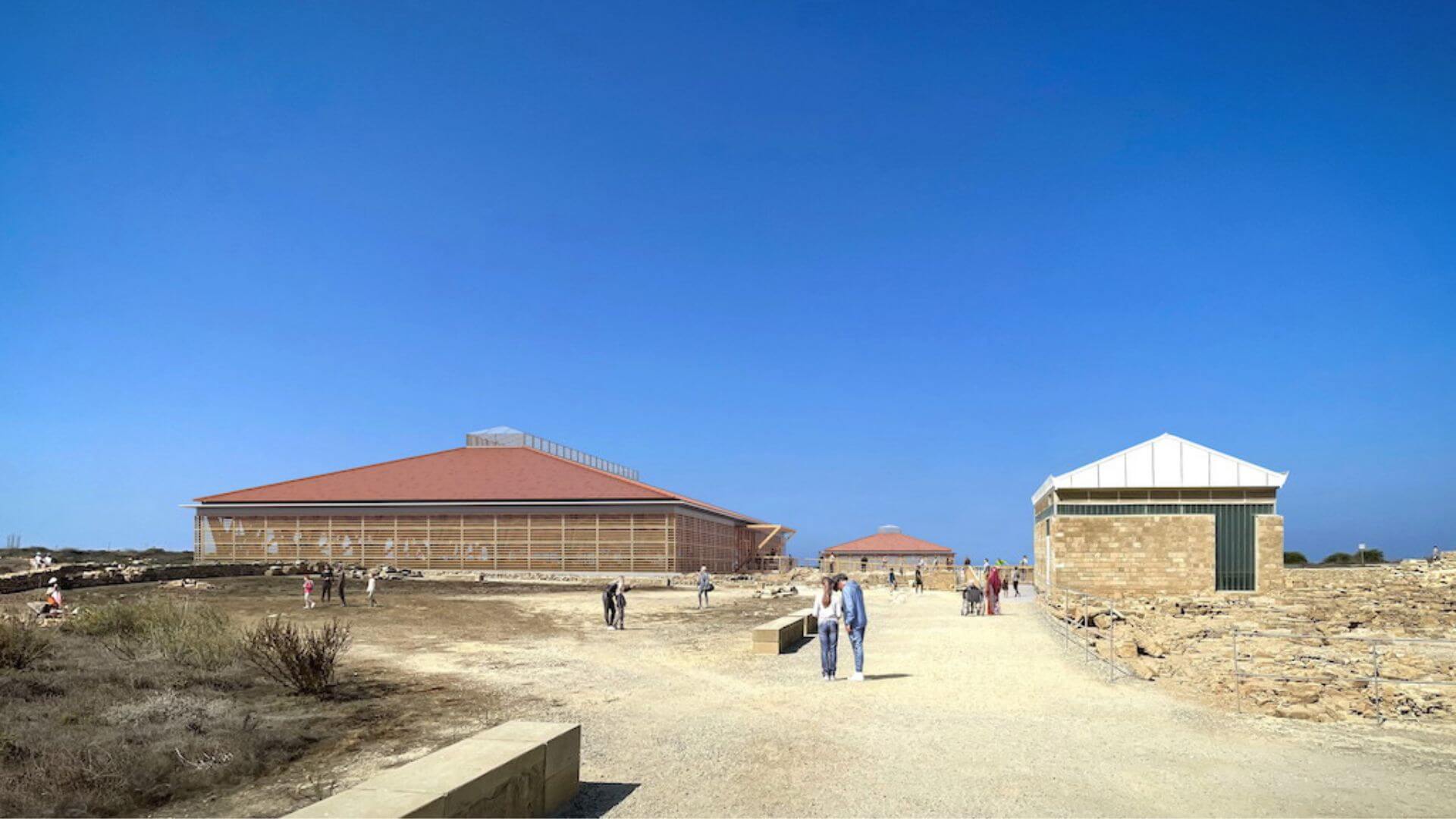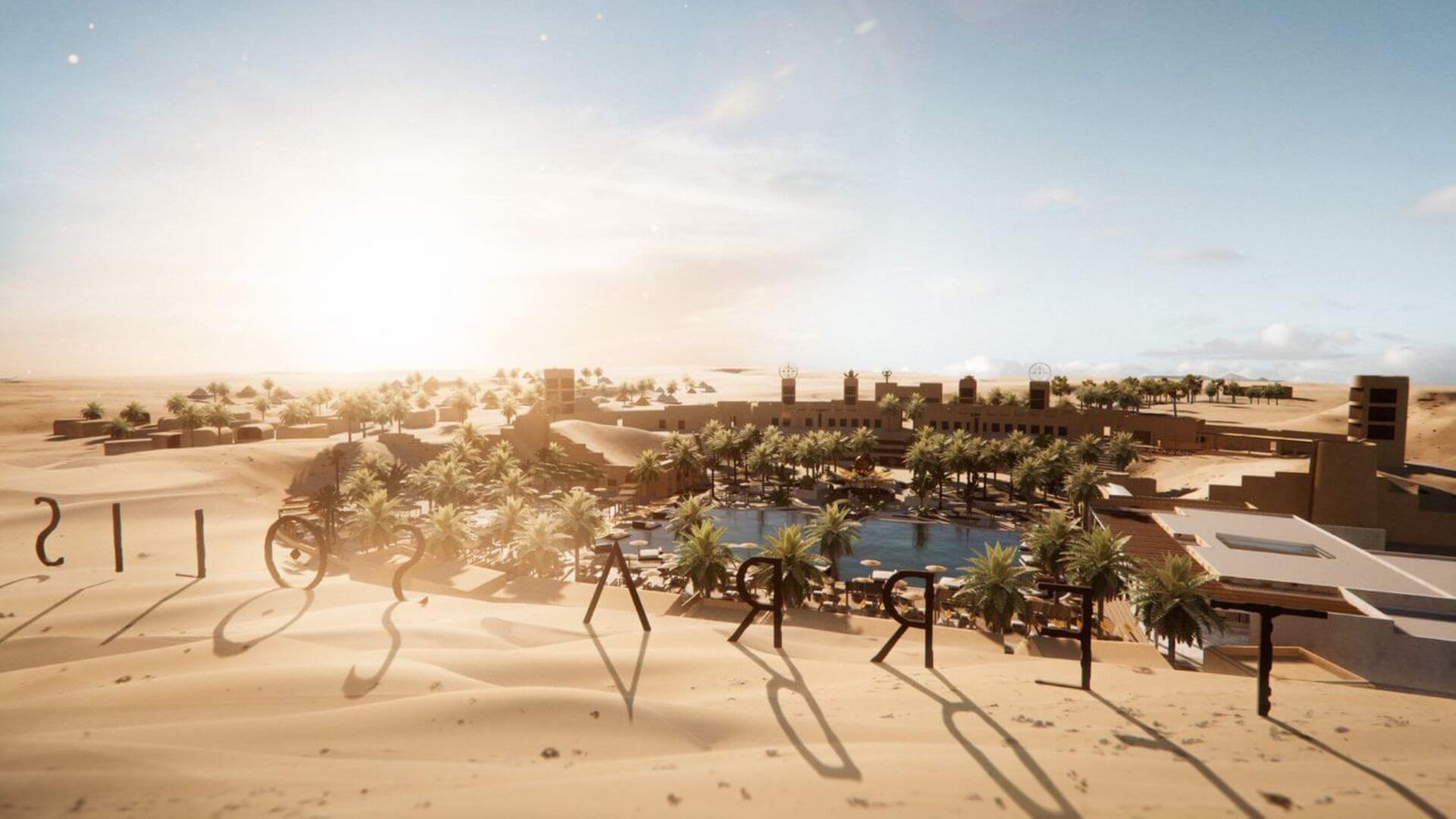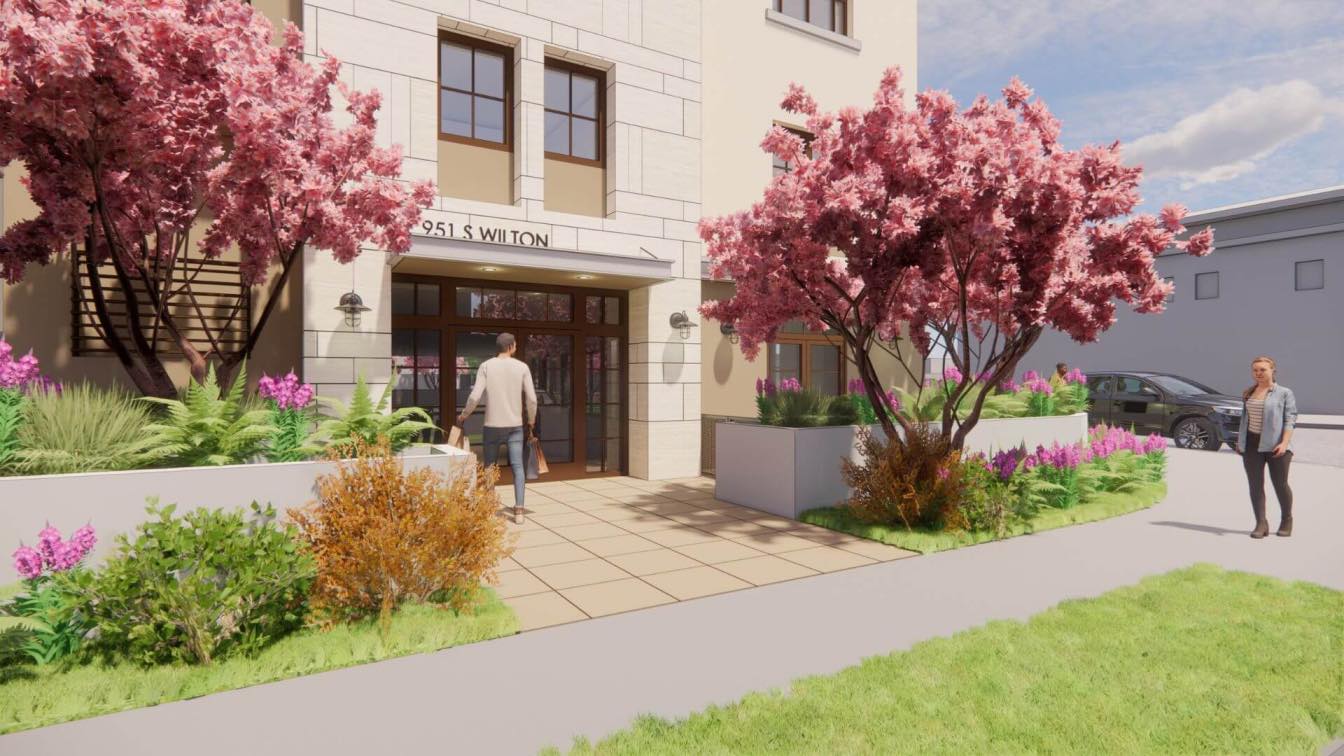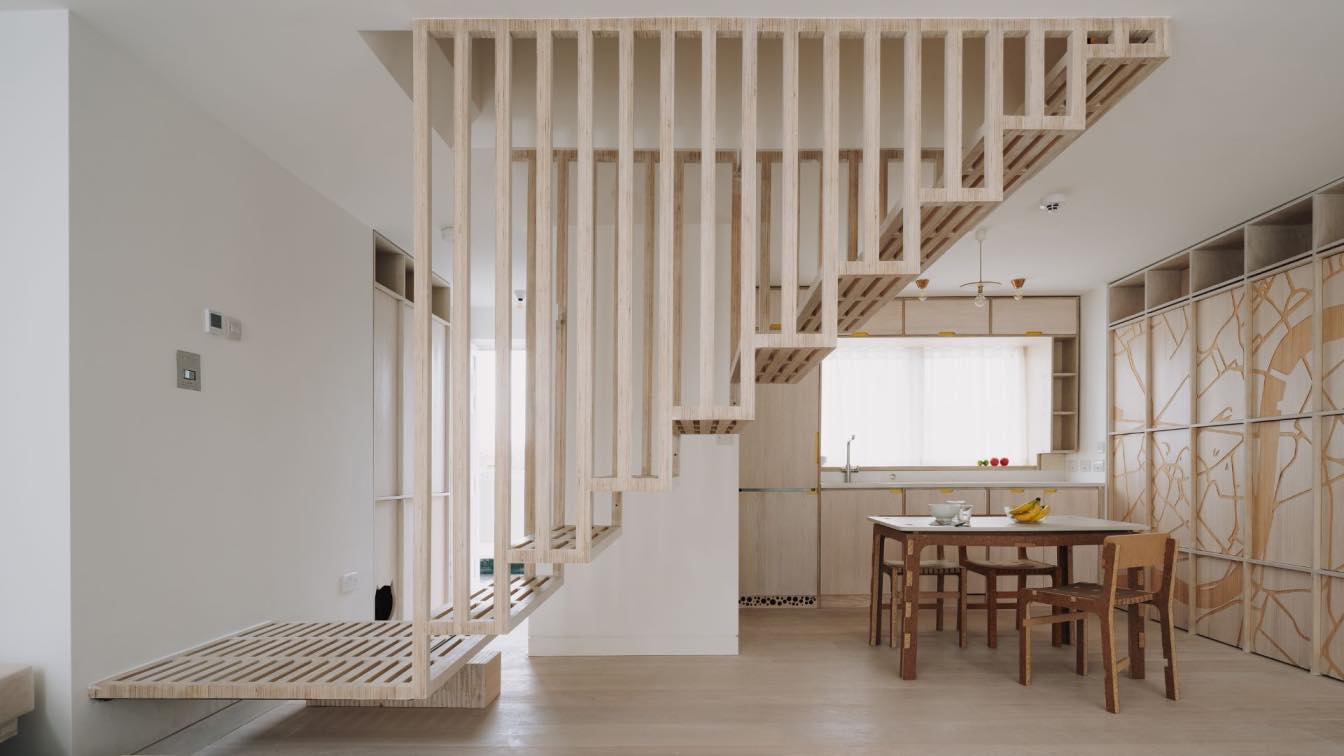Winning firm Hugh Broughton Architects will bring protective shelter designs to the UNESCO World Heritage site of Nea Pafos.
LOS ANGELES – The Getty Conservation Institute (GCI) and the Department of Antiquities of Cyprus (DoA) have named Hugh Broughton Architects the winner of an international competition to design protective shelter prototypes at the UNESCO World Heritage site of Nea Pafos in Cyprus. In 2019, the GCI and DoA launched the competition to advance the conservation and management of this important archaeological site.
“It has been a privilege to develop ideas for shelter prototypes at Nea Pafos and we are thrilled to have been selected as winners of the design competition,” says Hugh Broughton, director at Hugh Broughton Architects. “We have proposed solutions which minimize physical and visual impact on the site and make best use of sustainable passive design techniques to protect the remarkable Roman mosaics and archaeology. Our designs reflect a creative and methodical collaboration between architects, conservation specialists and engineers, all of whom are looking forward to working in partnership with the GCI and DoA to develop proposals to preserve the future of this stunning historic place.”
 Rendering of the exterior shelter prototype, Hugh Broughton Architects
Rendering of the exterior shelter prototype, Hugh Broughton Architects
Since 2018, GCI and DoA have been developing a conservation and management plan to guide the preservation of Nea Pafos (also known as Nea Paphos), one of the richest sites of mosaic pavements in the eastern Mediterranean region with significant remains from the Hellenistic, Roman, early Christian, and Byzantine periods, as well as Frankish and Ottoman monuments. The construction of protective shelters is imperative in order to secure and present the mosaic pavements and other excavated remains for the future.
In fall 2019, the GCI and DoA issued a Call for Expression of Interest from architectural design firms worldwide. From the many responses received, six firms were shortlisted: Carmody Groarke, Cullinan Studio, Studio Gionata Rizzi, Hugh Broughton Architects, Machado Silvetti, and Sela Jaymes Architects (working in association with Gort Scott).
The firms were asked to develop concept designs for two shelter prototypes: the first for the Villa of Theseus, which includes a surviving panel from the life of Achilles, a mosaic depicting Theseus and the Minotaur in the Labyrinth, and a bath complex with several beautiful geometric mosaics; and the second for the House of Orpheus, to protect a mosaic that depicts the battle between Heracles and the Lion of Nemea and another that features Orpheus surrounded by animals listening to his divine music, in addition to a smaller bath complex.
 Drone photograph of part of the Villa of Theseus (foreground) and House of Orpheus (background). Drone photo by Carleton Immersive Media Studio
Drone photograph of part of the Villa of Theseus (foreground) and House of Orpheus (background). Drone photo by Carleton Immersive Media Studio
The detailed design brief for the competition, developed by GCI and DoA with an international group of experts in conservation and protective shelters, included numerous requirements: most critically, to ensure the protection of the fragile remains from human and environmental threats; to connect the design to the site and setting; to create conditions for viewing the mosaics and facilitating circulation of visitors; and to use sustainable materials and systems. The shortlisted firms visited Nea Pafos with the DoA and other experts to help conceptualize their prototypes.
The concept designs were evaluated by an international jury composed of GCI and DoA staff, as well as independent international experts in conservation, archaeology, architectural design, and structural and environmental engineering—all with past experience at archaeological or historic sites. The jury was chaired by Pamela Hawkes, FAIA, Professor of Practice in Historic Preservation at the University of Pennsylvania’s Weitzman School of Design and Principal with Scattergood Design in Portland, Maine.
The jury found Hugh Broughton Architects’ design concept for a shelter prototype the most comprehensive and well-balanced response to the complex criteria established by the design brief, with priority given to protection of the mosaics. The structural design with its column free interior and innovative surface bearing foundations minimizes physical impacts on the archaeological fabric, while providing protection from seismic, wind uplift, and tsunami hazards.
 Mosaic of Theseus and the Labyrinth, one of several mosaic pavements that will be protected by the shelter. Photo by Scott Warren
Mosaic of Theseus and the Labyrinth, one of several mosaic pavements that will be protected by the shelter. Photo by Scott Warren
“The design of shelters on archaeological sites is a complex undertaking that must balance a number of competing demands,” says Jeanne Marie Teutonico, associate director for Strategic Initiatives and Publications at the GCI. “Hugh Broughton Architects’ creative and thoughtful design concept provides protection for the site’s mosaics with structures that are sustainable and sensitive to the archaeological context.”
The proposal also demonstrates understanding of other environmental threats to the mosaics, such as those posed by ground salts, which are addressed through carefully considered passive controls. The shelter prototypes, with their hip roofs and use of local vernacular materials, are compatible with other structures on the archeological site and in the adjacent city. The simplicity of the interior design does not compete visually with the mosaics and other archaeological fabric on view. The shelters can be expanded or replicated using the “kit of parts” approach proposed by the team, with materials that are locally available and easily replaceable.
“The protection of the mosaics of the important UNESCO World Heritage archeological site of Nea Pafos, which are of unique value, is among the priorities of the DoA,” says Dr. Marina Solomidou-Ieronymidou, director of the Department of Antiquities of Cyprus. “For this reason, it was decided to collaborate with the GCI for the creation of a Conservation and Management Plan, as well as for initiating this international competition for shelter designs which will protect the sensitive archaeological remains. The concept design developed by Hugh Broughton Architects considers the main criteria put forward as part of the competition, such as the need to preserve the integrity of the site and the broader area, and other environmental factors and visitation issues. The proposal will be finalized following discussions with the DoA and GCI and will be implemented based on governmental procedures.”
Hugh Broughton’s team includes conservation specialists Martin Ashley Architects, structural engineers Expedition Engineering, environmental consultancy Harley Haddow, and cost consultants Jackson Coles.
Getty is a leading global arts organization committed to the exhibition, conservation, and understanding of the world’s artistic and cultural heritage. Working collaboratively with partners around the globe, the Getty Foundation, Getty Conservation Institute, Getty Museum and Getty Research Institute are all dedicated to the greater understanding of the relationships between the world’s many cultures. The Los Angeles-based J. Paul Getty Trust and Getty programs share art, knowledge, and resources online at Getty.edu and welcome the public for free at the Getty Center and the Getty Villa.
The Getty Conservation Institute (GCI) works internationally to advance conservation practice in the visual arts—broadly interpreted to include objects, collections, architecture, and sites. The Institute serves the conservation community through scientific research, education and training, field projects, and the dissemination of information. In all its endeavors, the GCI creates and delivers knowledge that contributes to the conservation of the world’s cultural heritage.
The Department of Antiquities (DoA) of the Ministry of Transport, Communications and Works, as per the Antiquities’ Law (Cap. 31) is the governmental Department responsible for the management, protection, preservation, research, and presentation of the cultural heritage of Cyprus. As such, it controls, upgrades and develops archaeological sites, monuments and museums, declares Ancient Monuments (Schedules A and B of the afore-mentioned Law) and conducts management plans and museological studies. The DoA controls and manages systematic and rescue excavations undertaken by its staff or foreign and local academic institutions and puts forward archaeological publications. Its efforts equally focus on the control of illicit trafficking of antiquities, while it is in close collaboration with international heritage organisations (e.g. UNESCO, ICCROM, ICOMOS, ICOM) and the European Union through participating in various heritage networks. A major component of DoA’s work is the promotion of Cypriot archaeological heritage.
Hugh Broughton Architects was formed in London, England in 1996 and has a reputation for producing carefully crafted contemporary architecture in sensitive settings. The practice is well known for its work in the heritage sector. Recent award-winning projects include a major project at the 13th century Clifford’s Tower for English Heritage in York, England (2022), Conservation of Sir Christopher Wren’s Painted Hall for the Old Royal Naval College in London, England (2019) and a purpose-built gallery for the 400-year-old Portland Collection of Fine Arts on the Welbeck Estate, Nottinghamshire, England (2016). The practice is also a global authority on the design of science research stations in extreme locations, following the launch of the internationally acclaimed Halley VI Antarctic Research Station for the British Antarctic Survey (2013). This extraordinary commission has led to other international polar projects for the USA and Spain and ongoing projects to develop major research facilities in Antarctica for UK, New Zealand, and Australia.





